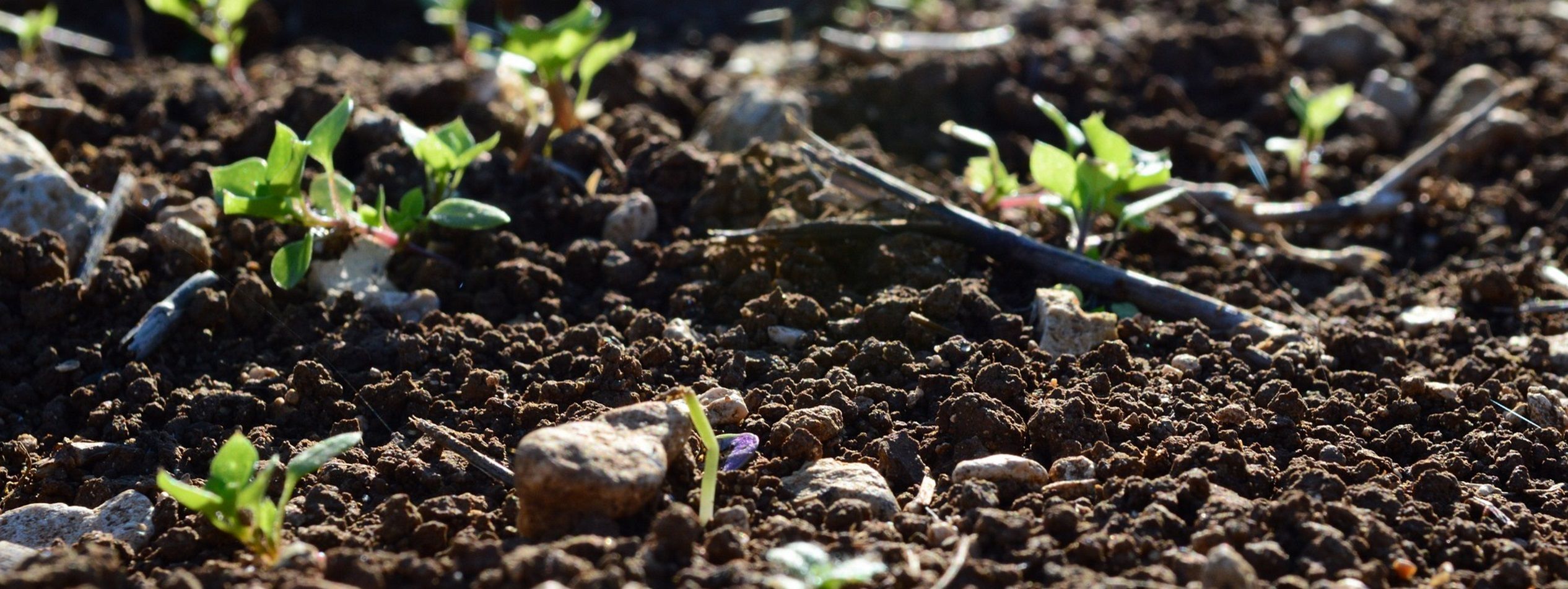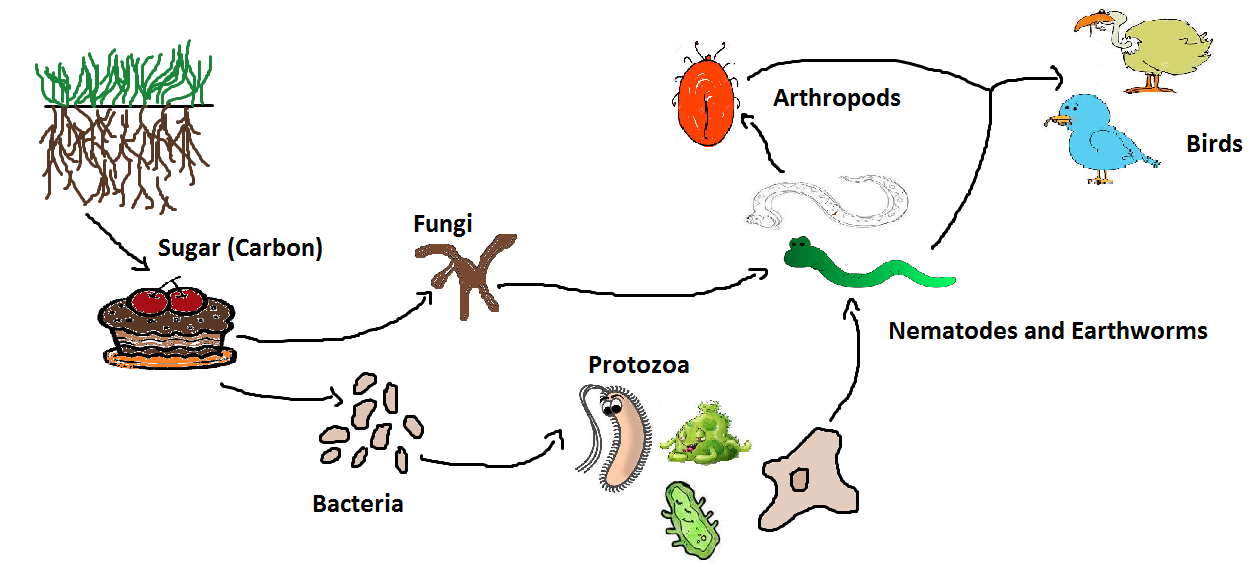When discussing soil life with farmers, I am often confronted by comments such as: “here we go again talking about those little bugs”. I think the concept of soil life can be challenging for some farmers, as it is not something that they can see. They can’t see the actual organisms we are speaking about, and they can’t see the direct benefit that they provide. Building soil life is a continual, long-term process. There has been a comprehensive series of blogs on the soil food web which Portia Phohlo has written, explaining the different organisms which occur in the soil and their roles. I thought to compliment this series by discussing broadly what drives the soil food web, and the benefits that a diverse, thriving soil life provides.
Carbon is the driving force behind soil life. It is the primary source of energy for soil organisms, which is why so much of the conversation around soil biology and soil health is centred around improving soil carbon and organic matter (approximately 58% of organic matter in the soil is carbon). There are four main sources of carbon in the soil, which drive the soil food web. These are root exudates (sugar compounds, rich in carbon, released by soil roots), leaf litter or plant residues, soil organic matter and microbial biomass (the organisms themselves). Soil organisms are able to decompose these different carbon sources (including other micro-organisms which have died in the soil, i.e. they are fully integrated in the carbon cycle in the soil) with various levels of ease, and different organisms prefer different sources of carbon. This is why we advocate for multiple, diverse plant species. Diverse plant species will result in diverse forms of soil carbon, which will further result in a diverse soil food web.
Image by Portia Phohlo from Soil Biology, the engineers in the soil
A diverse soil food web is important because biodiversity in the soil provides many services. Some of these include:
- Nutrient cycling: Soil organisms break down organic matter, releasing various nutrients which plants and other soil organisms need in order to grow. This continuous process in the soil results in the cycling of nutrients from the soil, to the plant, to the animal, and back to the soil. Overall soil health, which includes good soil structure and balanced soil fertility further supports this process, but a diverse soil food web is central to ensuring it happens effectively.
- Adaptability: A diverse soil food web is flexible to changing conditions. There are organisms which thrive when the soil conditions are dry, wet, hot or cold. This is especially important taking into account unknown climatic conditions in future.
- Resilience: Diversity results in resilience. This is true in many areas, and definitely true in the soil. A greater diversity of organisms in the soil, linked to the point above, results in the soil being able to adapt to various conditions, thus making the soil more resilient to change.
- Resistance: A diverse soil food web provides resistance to soil and plant pathogens and diseases.
These are just some of why we emphasise the importance of the little bugs in the soil. There are even more benefits to having a diverse soil food web, many of which are discussed in more detail in other blogs on our website. So if you are interested in learning more, keep reading here, or ask any questions in the comments section below.
- A carbon footprint assessment for pasture-based dairy farming systems in South Africa - 2024-02-07
- What progress have farms participating with Trace & Save made over the past 10 years? - 2023-09-06
- Carbon footprint reduction over time: Lessons from pasture-based dairy farms in South Africa - 2023-09-04


